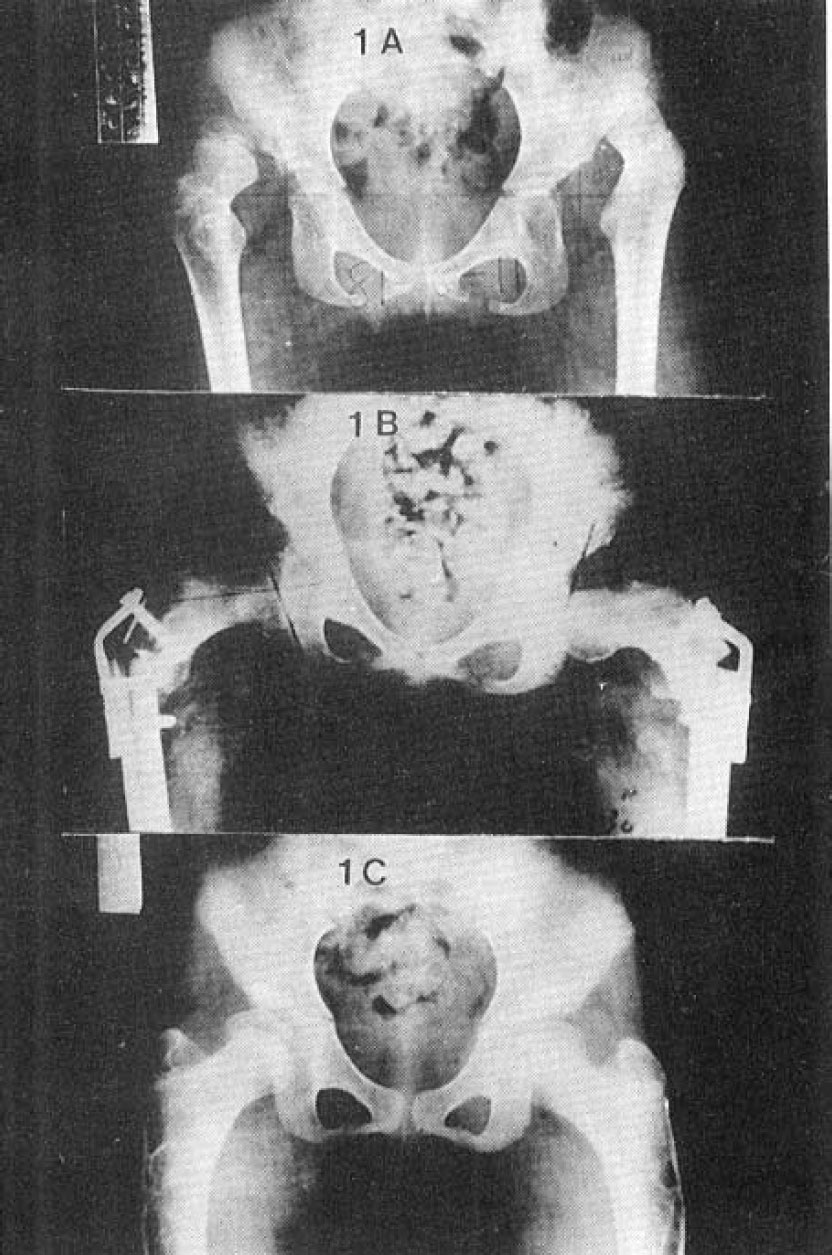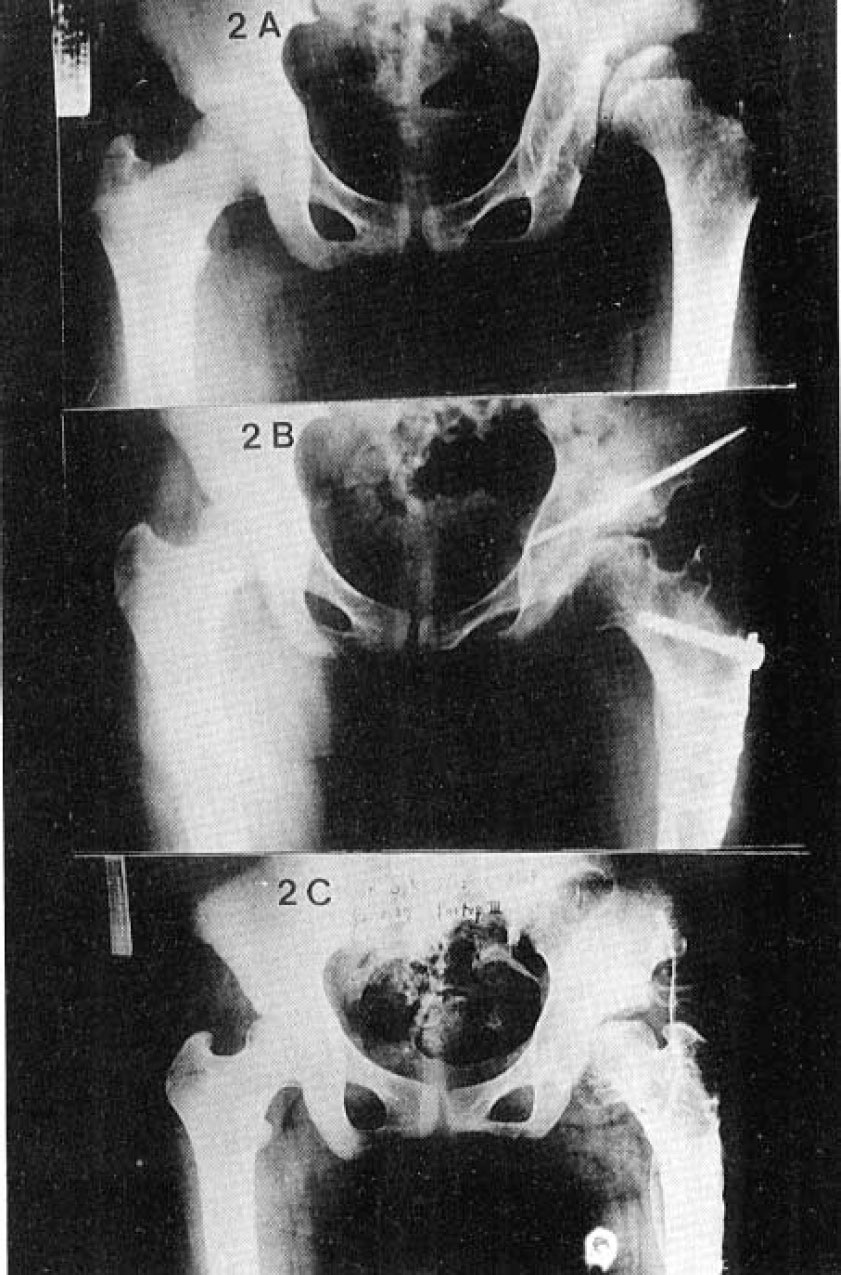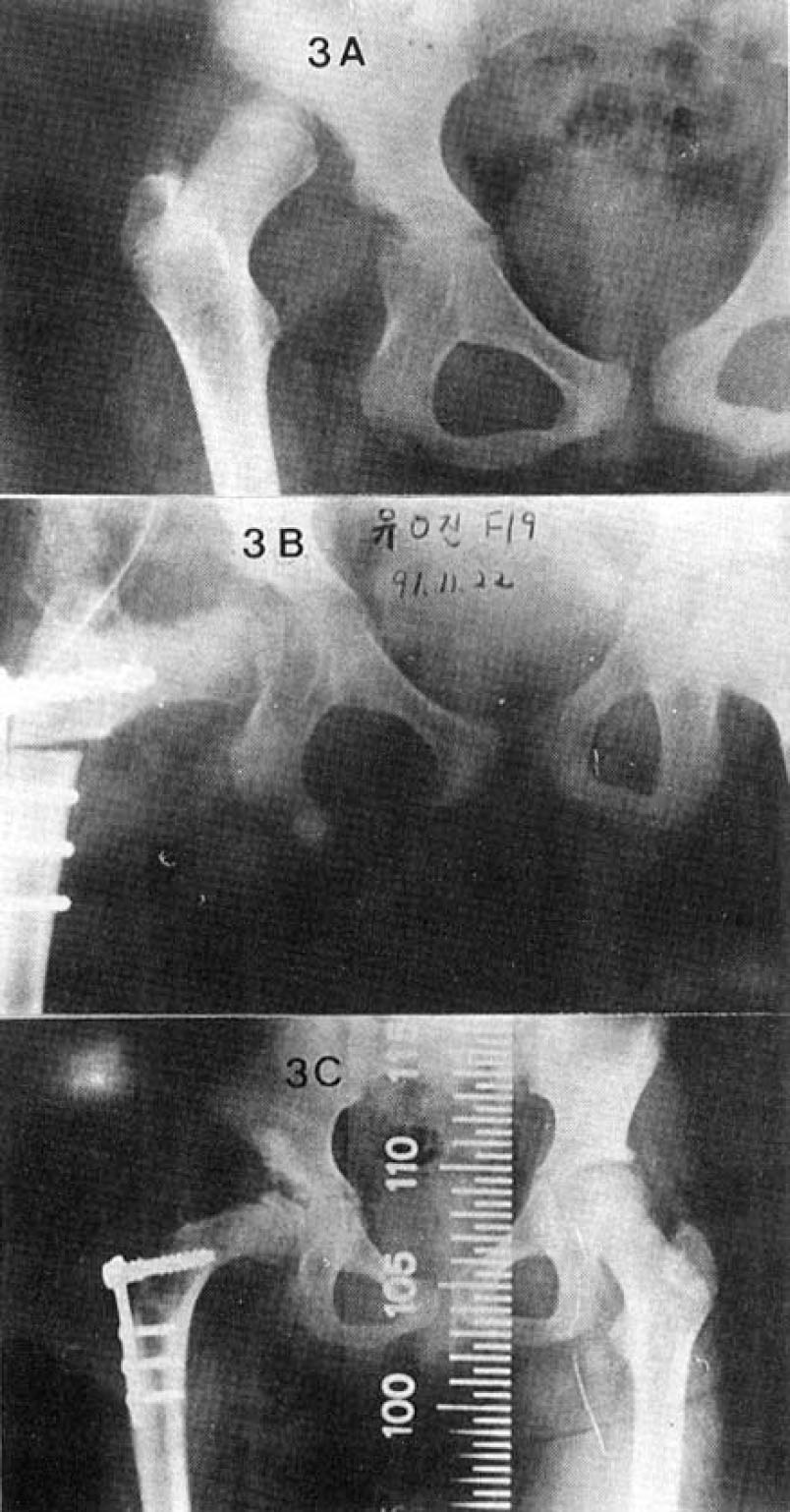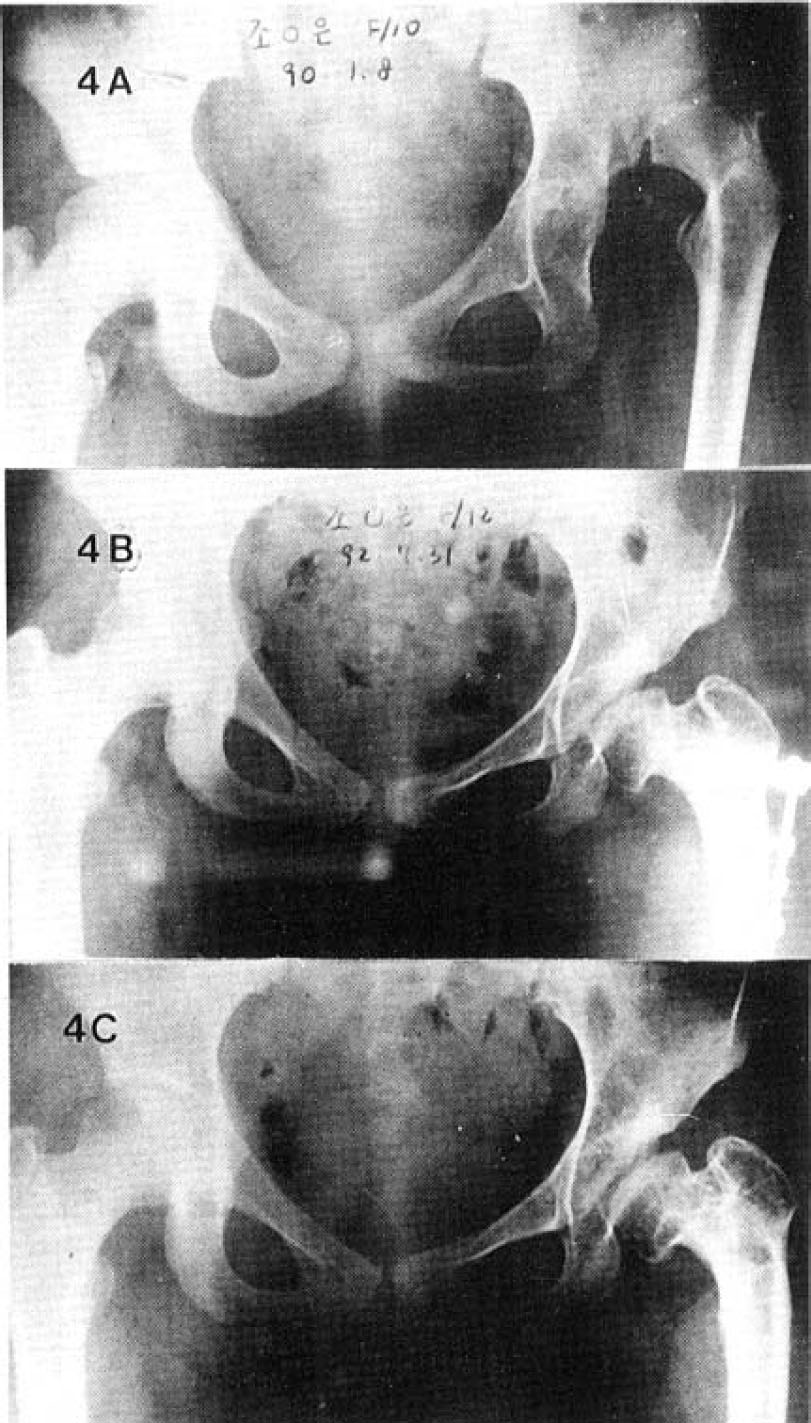Abstract
There are many unanswered questions concerning the natural history of developmental dislocation of the hip. The assessment of impaired function in complete hip dislocation is very subjective.
According to Wedge, however, 60 percent of hips seems to present significant problems. The remaining 40 percent gives no pain, but produces an abnormal gait with decreased agility, and important consideration in mordern society. Therefore pediatric orthopaedic surgeon should consider to improve the gait and hip function in the neglected D.D.H in elderly children.
The following problem have been debated, for instance : 1) traction prior to open reduction 2) how much shorten the femur 3) what type of pelvic osteotomy should be performed ? 4) importance of derotation and varus osteotomy of femur 5) to provide immediate stability of the hip, 6) postsurgery joint stiffness, and 7) avascular necrosis of the femoral head. Above problems are discussed through 38 cases which were above the age of 5 years. The results were as follow : 1) A femoral varus osteotomy provided the hip stability by containing the head in socket and femoral shortening effect.
2) The Preop traction provided the soft tissue release at surgery and decreased the incidence of AVN.
3) The acetabular remodelling was observed until the age of 13 years when concentric relocation of the head was achieved even after the age 8 years. 4) The pelvic osteotomy was not always required in those case of complete dislocation in which the femoral head could be deeply relocated in the acetabulum after femoral osteotomy.
REFERENCES
1. Benson MKD. Histological change of limbus in congenital dislocation of the hip, experimental study. 1992. Sept. Birtish Orthopedic Meeting.
2. Chiari K. Pelvic osteotomy for hip subluxation. J Bone and Joint Surg. 1970; 52-B:174–179.
3. Harris N, Lloyd-Roberts GC, Gallien R. Acetabular development in CDH. J Bone Joint Surg,. 1975; 57-B:46–52.
4. Klisic P, Jankavic L. Combined procedure of open reduction and shortening of the femur in the treatment of congenital dislocation of the hip in old children. Clinc Orthop. 1976; 119:60–72.
5. McKay Dw. A comparison of the innominate and the penicapsular osteotomy in the treatment of congenital dislocation of the hip. Clin Orthop,. 1974; 98:124–132.
6. Ponseti IV. Growth and development of the acetabular in the normal child. Anatomical histological and roentgenographic studies. J Bone Joint Surg. 1978; 60-A:575–585.
7. Salter RB. Innominate osteotomy in the treatment of congenital dislocation and subluxation of the hip. J Bone Joint Surg. 1961; 43-B:518–539.

8. Severin E. Congenital dislocation of the hip. Development of the joint after closed reduction. J Bone Joint Surg. 1950; 32-A:507–518.
9. Wedge JH. The Natural history of congenital dislocation of the hip. J Bone Joint Surg. 1979; 61-B:334–338.
Fig. 1
7 yrs 8 months old girl with bilateral high DDH (A). Both Hip were reduced by open reduction and femoral varus derotation osteotomy. Femoral neck shaft angle was 110 on Rt. and 85 on Lt. (B). At post op. 5 yrs, hips were reduced very well. Improvement femoral neck shaft angle and acetabular angle was shown(C).

Fig. 2
11 yrs old girl with Lt. DDH and severe acetabular dysplsia(A). Lt. hip was reduced by open reduction with Klisic method at post op 1 yr 6 month(B). At post op. 2 yr 3 month, Lt. hip was developed nearly normal shape(C).

Fig. 3
9 yrs old girl with Rt. high DDH(A). Rt hip was reduced by open reduction and femoral varus derotation osteotomy. The femoral head was concentric reduced in the acetabulum(B). At pot op 2 yrs 6 months, Rt. Hip was maintained in good reduced position(C).





 PDF
PDF ePub
ePub Citation
Citation Print
Print



 XML Download
XML Download